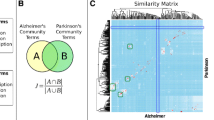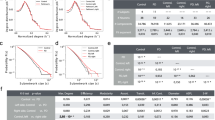Abstract
Experimental records show the existence of a biological linkage between neuronal death and Golgi apparatus fragmentation. The comprehension of such linkage should help to understand the dynamics undergoing neurological damage caused by diseases such as Alzheimer’s disease or amyotrophic lateral sclerosis. In this paper, the bi-objective minimum cardinality bottleneck Steiner tree problem along with an ad-hoc exact algorithm are proposed to study such phenomena. The proposed algorithm is based on integer programming and the so-called \(\epsilon \)-constraint method. A key feature of the devised approach is that it allows an efficient integer programming formulation of the problem. The obtained results show that it is possible to obtain additional evidence supporting the hypothesis that alterations of the Golgi apparatus structure and neuronal death interact through the biological mechanisms underlying the outbreak and progression of neurodegenerative diseases. Moreover, the function of cellular response to stress as a biological linkage between these phenomena is also further investigated. Complementary, computational results on a synthetic dataset are also provided with the aim of reporting the performance of the proposed algorithm.




Similar content being viewed by others
Notes
KEGG network diagrams are manually drawn detailed molecular interaction/reaction schemes corresponding to different processes of interest; they are made available by the Kyoto Encyclopedia of Genes and Genome (KEGG 2015).
References
Álvarez-Miranda, E., Ljubić, I., & Mutzel, P. (2013a). The maximum weight connected subgraph problem. In M. Jünger & G. Reinelt (Eds.), Facets of Combinatorial Optimization (pp. 245–270). Berlin: Springer.
Álvarez-Miranda, E., Ljubić, I., & Mutzel, P. (2013b). The rooted maximum node-weight connected subgraph problem. In Gomes, C., & Sellmann, M. editors, Proceedings of CPAIOR 2013, volume 7874 of LNCS, (pp. 300–315). Springer, 2013b.
Backes, C., Rurainski, A., Klau, G., Müller, O., Stöckel, D., Gerasch, A., et al. (2011). An integer linear programming approach for finding deregulated subgraphs in regulatory networks. Nucleic Acids Research, 1, 1–13.
Bellouze, S., Schäfer, M., Buttigieg, D., Baillat, G., Rabouille, C., & Haase, G. (2014). Golgi fragmentation in pmn mice is due to a defective arf1/tbce cross-talk that coordinates copi vesicle formation and tubulin polymerization. Human Molecular Genetics, 23(22), 5961–5975.
Bertram, L., & Tanzi, R. (2005). The genetic epidemiology of neurodegenerative disease. The Journal of Clinical Investigation, 115(6), 1449–1457.
BioGRID\(^{3.4}\). Biological general repository for interaction datasets, 2015. URL http://thebiogrid.org/.
Boland, N., Charkhgard, H., & Savelsbergh, M. (2015). A criterion space search algorithm for biobjective mixed integer programming: The rectangle splitting method. Optimization Online
Cancino, J., & Luini, A. (2013). Signaling circuits on the golgi complex. Traffic, 14(2), 121–134.
Castro-Alvarez, J., Uribe-Arias, S., Mejía-Raigosa, D., & Cardona-Gómez, G. (2014). Cyclin-dependent kinase 5, a node protein in diminished tauopathy: A systems biology approach. Frontiers in aging neuroscience, 6, 1–13.
Chia, J., Goh, G., Racine, V., Ng, S., Kumar, P., & Bard, F. (2012). RNAi screening reveals a large signaling network controlling the Golgi apparatus in human cells. Molecular Systems Biology, 8(1), 629.
Chinchuluun, A., & Pardalos, P. (2007). A survey of recent developments in multiobjective optimization. Annals of Operations Research, 154(1), 29–50.
Dittrich, M., Klau, G., Rosenwald, A., Dandekar, T., & Muller, T. (2008). Identifying functional modules in protein-protein interaction networks: An integrated exact approach. Bioinformatics, 24(13), i223–i231.
Duthey, B. (2013). Alzheimer disease and other dementias. World Health Organization: Priority Medicines for Europe and the World “A Public Health Approach to Innovation”, 2013.
Duin, C., & Volgenant, A. (1997). The partial sum criterion for Steiner trees in graphs and shortest paths. European journal of operational research, 97(1), 172–182.
Ehrgott, M., & Wiecek, M. (2005). Mutiobjective programming. In Multiple criteria decision analysis: State of the art surveys, (pp. 667–708). Springer, 2005.
Fan, J., Hu, Z., Zeng, L., Lu, W., Tang, X., Zhang, J., et al. (2008). Golgi apparatus and neurodegenerative diseases. International Journal of Developmental Neuroscience, 26(6), 523–534.
Farhan, H., & Rabouille, C. (2011). Signalling to and from the secretory pathway. Journal of Cell Science, 124(2), 171–180.
Fischetti, M., Leitner, M., Ljubić, I., Luipersbeck, M., Monaci, M., Resch, M., Salvagnin, D., & Sinnl, M. (2014). Thinning out steiner trees a node-based model for uniform edge costs. Workshop of the 11th DIMACS Implementation Challenge
Fujita, Y., & Okamoto, K. (2005). Golgi apparatus of the motor neurons in patients with amyotrophic lateral sclerosis and in mice models of amyotrophic lateral sclerosis. Neuropathology, 25(4), 388–394.
Gene Cards: Human Gene Database. GRB2 Genecard, 2015. URL http://www.genecards.org/cgi-bin/carddisp.pl?gene=GRB2.
Gene Ontology Consortium . The Gene Ontology Project, 2015. URL http://geneontology.org/.
Haimes, Y., Lasdon, L., & Wismer, D. (1971). On a bicriterion formulation of the problems of integrated system identification and system optimization. IEEE Transactions on Systems Man and Cybernetics, 1, 296–297.
Heneka, M., Reyes-Irisarri, E., Hüll, M., & Kummer, M. (2011) Impact and therapeutic potential of ppars in alzheimers disease. Current Neuropharmacology, 9(4)
Huang, S., & Fraenkel, E. (2009). Integration of proteomic, transcriptional, and interactome data reveals hidden signaling components. Science Signaling, 2(81), ra40.
Hutchins, J., & Barger, S. (1998). Why neurons die: Cell death in the nervous system. The Anatomical Record, 253, 79–90.
Ideker, T., Ozier, O., Schwikowski, B., & Siegel, A. (2002). Discovering regulatory and signalling circuits in molecular interaction networks. Bioinformatics, 18(Supplement 1), S233–S240.
Jiang, Q., Wang, L., Guan, Y., Xu, H., Niu, Y., Han, L., et al. (2014). Golgin-84-associated golgi fragmentation triggers tau hyperphosphorylation by activation of cyclin-dependent kinase-5 and extracellular signal-regulated kinase. Neurobiology of Aging, 35(6), 1352–1363.
Joshi, G., Chi, Y., Huang, Z., & Wang, Y. (2014). A\(\beta \)-induced golgi fragmentation in Alzheimer’s disease enhances a\(\beta \) production. Proceedings of the National Academy of Sciences, 111(13), E1230–E1239.
Kamada, M., Izumi, Y., Ayaki, T., Nakamura, M., Kagawa, S., Kudo, E., et al. (2014). Clinicopathologic features of autosomal recessive amyotrophic lateral sclerosis associated with optineurin mutation. Neuropathology, 34(1), 64–70.
KEGG. Kyoto encyclopedia of genes and genomes, 2015. URL http://www.genome.jp/kegg/.
Kim, T., Kim, E., Yoon, S., & Yoon, J. (2008). Herp enhances er-associated protein degradation by recruiting ubiquilins. Biochemical and Biophysical Research Communications, 369(2), 741–746.
Koch, T., Martin, A., & Voß, A. (2001). SteinLib: An updated library on Steiner tree problems in graphs. Berlin: Springer.
Kristiansen, M., & Ham, J. (2014). Mprogrammed cell death during neuronal development: the sympathetic neuron model. Cell Death and Differentiation, 21, 1025–1035.
Lee, J., Yang, Y., Liang, F., Gough, D., Levy, D., & Sehgal, P. (2012). Nongenomic STAT5-dependent effects on Golgi apparatus and endoplasmic reticulum structure and function. American Journal of Physiology - Cell Physiology, 302(5), C804–C820.
Leitner, M., Ljubić, I., & Sinnl, M. (2014). A computational study of exact approaches for the bi-objective prize-collecting steiner tree problem. INFORMS Journal on Computing, 27(1), 118–134.
Maere, S., Heymans, K., & Kuiper, M. (2005). BiNGO: A Cytoscape plugin to assess overrepresentation of gene ontology categories in biological networks. Bioinformatics, 21, 448–3449.
Malm, T., Mariani, M., Donovan, L., Neilson, L., & Landreth, G. (2015). Activation of the nuclear receptor ppar is neuroprotective in a transgenic mouse model of alzheimers disease through inhibition of inflammation. Journal of Neuroinflammation, 12(7), 1–15.
Mayeux, R. (2003). Epidemiology of neurodegeneration. Annual Review of Neuroscience, 26(1), 81–104.
Mazza, A., Gat-Viks, I., Farhan, H., & Sharan, R. (2014). A minimum-labeling approach for reconstructing protein networks across multiple conditions. Algorithms for Molecular Biology, 9(1), 1–8.
Millarte, V., Boncompain, G., Tillmann, K., Perez, F., Sztul, E., & Farhan, H. (2015). Phospholipase c gamma 1 regulates early secretory trafficking and cell migration via interaction with p115. Mol Biol Cell, 26, 2263–2278.
Mironov, A., & Pavelka, M. editors (2008). The Golgi Apparatus: State of the art 110 years after Camillo Golgi’s discovery. Springer, 1st edition, 2008.
Moss, A., & Rabani, Y. (2007). Approximation algorithms for constrained node weighted steiner tree problems. SIAM Journal on Computing, 37(2), 460–481.
Nakagomi, S., Barsoum, M., Bossy-Wetzel, E., Sütterlin, C., Malhotra, V., & Lipton, S. (2008). A golgi fragmentation pathway in neurodegeneration. Neurobiology of Disease, 29(2), 221–231.
Qiu, C., Kivipelto, M., & von Strauss, E. (2009). Epidemiology of Alzheimers disease: occurrence, determinants, and strategies toward intervention. Dialogues in Clinical Neuroscience, 11 (2).
REACTOME. A curated pathway database, 2015. URL http://www.reactome.org/.
Reitz, C., Brayne, C., & Mayeux, R. (2011). Epidemiology of alzheimer disease. Nature Reviews Neurology, 7(3), 137–152.
Renton, A., Chiò, A., & Traynor, B. (2015). State of play in amyotrophic lateral sclerosis genetics. Nature Neuroscience, 17, 17–23.
Sai, X., Kawamura, Y., Kokame, K., Yamaguchi, H., Shiraishi, H., Suzuki, R., et al. (2002). Endoplasmic reticulum stress-inducible protein, Herp, enhances presenilin-mediated generation of amyloid \(\beta \)-protein. Journal of Biological Chemistry, 277(15), 12915–12920.
Sharma, R. (2009). RNAi screening: Tips and techniques. Nature Immunology, 10(8), 799–804.
Simpson, J., Joggerst, B., Laketa, V., Verissimo, F., Cetin, C., Erfle, H., et al. (2012). Genome-wide rnai screening identifies human proteins with a regulatory function in the early secretory pathway. Nat Cell Biol, 14, 764–774.
STRING\(^{10}\). Known and predicted protein-protein interactions, 2015. URL http://string-db.org.
Szklarczyk, D., Franceschini, A., Kuhn, M., Simonovic, M., Roth, A., Minguez, P., et al. (2011). The STRING database in 2011: Functional interaction networks of proteins, globally integrated and scored. Nucleic Acids Research, 39(suppl 1), D561–D568.
Tuvia, S., Taglicht, D., Erez, O., Alroy, I., Alchanati, I., Bicoviski, V., et al. (2007). The ubiquitin E3 ligase POSH regulates calcium homeostasis through spatial control of Herp. The Journal of Cell Biology, 177(1), 51–61.
Ulitsky, I., Karp, R., & Shamir, R. (2008). Detecting disease-specific dysregulated pathways via analysis of clinical expression profiles. In M. Vingron & L. Wong (Eds.), Research in computational molecular biology, volume 4955 of LNCS (pp. 347–359). Berlin: Springer.
Ulitsky, I., Krishnamurthy, A., Karp, R., & Shamir, R. (2010). DEGAS: de novo discovery of dysregulated pathways in human diseases. PLoS One, 5(10), e13367.
Yosef, N., Ungar, L., Zalckvar, E., Kimchi, A., Kupiec, M., Ruppin, E., et al. (2009). Toward accurate reconstruction of functional protein networks. Molecular Systems Biology, 5(248), 55.
Yosef, N., Zalckvar, E., Rubinstein, A., Homilius, M., Atias, N., Vardi, L., et al. (2011). ANAT: A tool for constructing and analyzing functional protein networks. Science Signaling, 4(196), pl1-pl1.
Yuan, J., Lipinski, M., & Degterev, A. (2003). Diversity in the mechanisms of neuronal cell death. Neuron, 40, 401–413.
Acknowledgments
The authors would like to acknowledge the anonymous reviewers for their insightful and constructive comments which helped to improve the quality of the paper. E. Álvarez-Miranda acknowledges the support of the Chilean Council of Scientific and Technological Research, CONICYT, through the grant FONDECYT N.11140060 and through the Complex Engineering Systems Institute (ICM:P-05-004-F, CONICYT:FBO16). H. Farhan is supported by the Swiss National Science Foundation, the German Science Foundation, the Young Scholar Fund of the University of Konstanz and by the Canton of Thurgau. M. Sinnl is supported by the Austrian Research Fund (FWF, Project P 26755-N19). M. Luipersbeck acknowledges the support of the University of Vienna through the uni:docs fellowship programme.
Author information
Authors and Affiliations
Corresponding author
Appendix
Appendix
See Figs. 5, 6, 7, and 8, Tables 2, 3, 4, 5, Fig. 9, Table 6.
KEGG pathway associated with ALS (obtained from KEGG 2015)
KEGG pathway associated with Alzheimer’s disease (dobtained from KEGG 2015)
Rights and permissions
About this article
Cite this article
Álvarez-Miranda, E., Farhan, H., Luipersbeck, M. et al. A bi-objective network design approach for discovering functional modules linking Golgi apparatus fragmentation and neuronal death. Ann Oper Res 258, 5–30 (2017). https://doi.org/10.1007/s10479-016-2188-2
Published:
Issue Date:
DOI: https://doi.org/10.1007/s10479-016-2188-2









